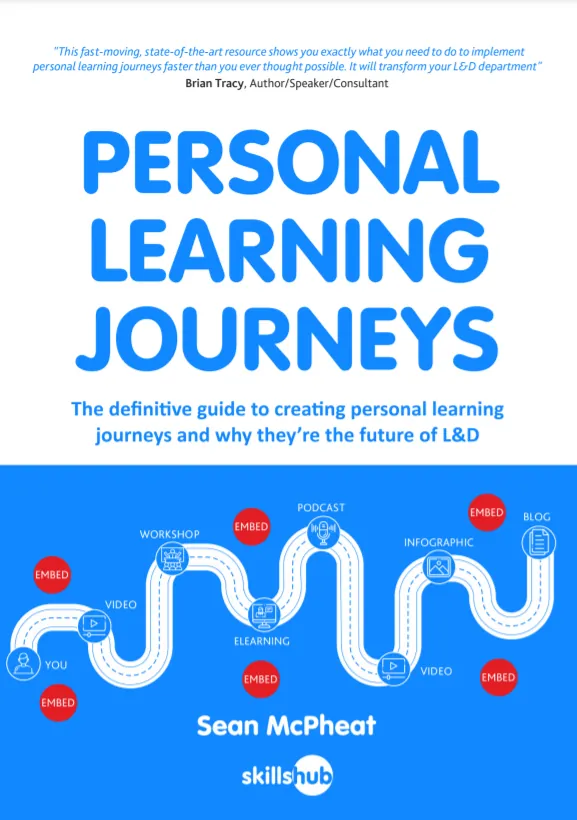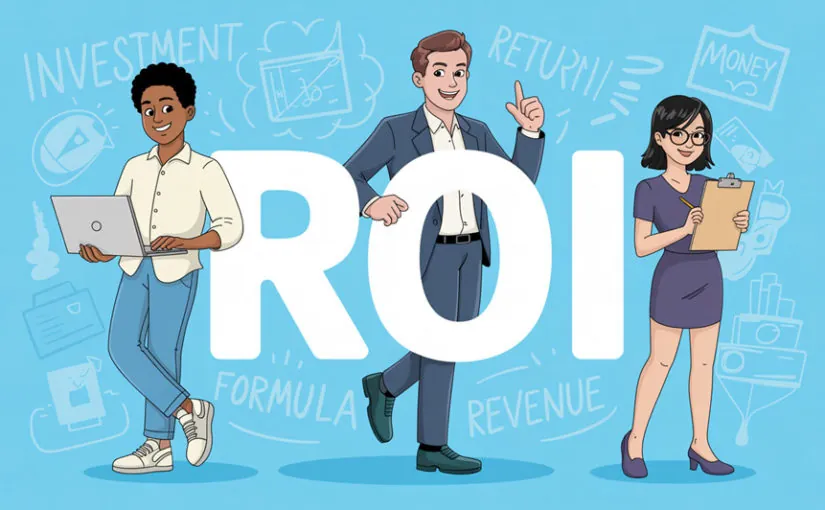
The eLearning market is exploding. Every week, a new platform promises to “revolutionise” learning and “engage your people like never before.” Yet most organisations still face the same old problems. Completion rates are low, courses are long and dull, and the business can’t prove any real impact.
For me, after more than twenty years working in learning and development, I’ve seen the same pattern repeat. Technology keeps getting better, but most platforms still fail to deliver what matters: measurable improvement in behaviour and performance. The goal isn’t to create a library of courses that look good on a dashboard. The goal is to help people do their jobs better.
That’s why choosing the right eLearning platform is less about features and more about outcomes. The best systems are designed around learning transfer, usability, and real-world performance. They make it easy for people to learn, apply, and improve. In this article, I’ll walk you through the top eLearning platforms in the UK, what makes them stand out, and how to choose the one that genuinely drives results.
Why most eLearning platforms fail
Let’s start with the problem. Most digital learning platforms are built for administrators, not learners. They prioritise tracking, compliance, and content hosting instead of experience and transfer. The result is an expensive content warehouse that nobody wants to use.
In my experience, there are three main reasons most eLearning systems fail to deliver:
1. They confuse access with engagement.
Just because people can access learning doesn’t mean they want to. Many platforms overwhelm learners with hundreds of courses but no direction. Learners log in once, click around, and leave.
2. They measure usage instead of impact.
Reporting often focuses on logins, completions, and minutes watched. These are activity metrics, not business metrics. The real question should be: what changed as a result of this learning?
3. They don’t support behaviour change.
The science of learning transfer is simple: people change when they apply something repeatedly in context. Most systems stop at the “knowledge” stage. They don’t help learners translate that knowledge into daily action.
If you’ve ever rolled out a platform that looked great in the demo but ended up gathering dust within six months, you’ve felt this first-hand. The issue isn’t eLearning itself. It’s the lack of focus on performance.

What the best eLearning platforms do differently
The best eLearning platforms flip the traditional model on its head. Instead of starting with courses, they start with outcomes. They focus on helping people change what they do, not just what they know.
Here’s what separates the platforms that work from those that don’t:
1. Personalised learning paths
Modern platforms use AI or simple diagnostics to tailor learning to each individual. Learners don’t have to guess where to start; the system recommends it for them.
2. Bite-sized content for real-world use
Nobody has time to sit through 60-minute modules anymore. Effective platforms break content down into short, actionable “learning bursts” that people can apply immediately.
3. Seamless user experience
If the platform isn’t intuitive, it doesn’t matter how good the content is. The best systems feel like Netflix for learning: clean, simple, and built for the learner.
4. Built-in reinforcement and reminders
Learning decay is real. Without reinforcement, 90% of training is forgotten within a week. Great platforms use nudges, reflection prompts, and micro challenges to help knowledge stick.
5. Data that tracks impact
The best providers don’t just show who clicked what. They connect learning activity to performance outcomes. This is where the conversation shifts from “learning hours” to “business results.”
The top eLearning platforms in the UK
Below are some of the most established and innovative eLearning platforms available to UK organisations today. These platforms differ in focus, audience, and pricing, but all have a clear strength in either content, technology, or learning design.
1. Skillshub
Skillshub is built for one purpose: performance. Designed by learning and development professionals, not software engineers, the platform focuses on behaviour change through practical, bite-sized learning.
It combines a ready-made content library of over 500 modules with the ability to upload your own branded material. Everything is focused on real-world application, not box-ticking. Skillshub also includes built-in learning transfer tools that prompt managers and learners to reflect, apply, and track progress after each session.
The platform integrates with all major LMS systems, but many organisations use it as their primary learning solution because of its simplicity and speed. If you want a platform that bridges the gap between digital learning and measurable improvement, Skillshub does it.
Key strengths:
- Engaging, bite-sized videos and resources
- Focus on learning transfer and behaviour change
- Simple interface that drives usage
- Rapid implementation and high adoption rates
Take a look at Skillshub.

Learn How To Create Personal Learning Journeys For FREE!
2. Learn Amp
Learn Amp combines learning management with engagement and performance management. It positions itself as an all-in-one employee experience platform rather than a traditional LMS.
Learners can explore curated content, share resources with peers, and track development goals in one place. Managers can assign content, track progress, and link development directly to performance reviews.
Key strengths:
- Excellent social learning features
- Clear reporting and data visualisation
- Strong integration with HR systems
Learn Amp is ideal for organisations looking to combine learning with culture and performance.
Visit Learn Amp.
3. 360Learning
This platform is known for its collaborative learning approach. Instead of relying solely on external content, 360Learning allows internal subject matter experts to create and share their own micro-courses.
The interface is user-friendly, and the co-authoring tools make it easy for teams to build training at speed. The platform’s focus on peer learning helps build internal capability and community.
Key strengths:
- Collaborative course creation
- Strong analytics and learner feedback loops
- Clean user experience
Check out 360 Learning.
4. LinkedIn Learning
With over 16,000 courses across business, technology, and creative skills, LinkedIn Learning remains a dominant player. Its strength lies in scale and ease of access.
Employees can access learning directly through LinkedIn, making it convenient and familiar. However, it’s not ideal for deep behavioural change. It’s best used for knowledge acquisition and top-up learning rather than a structured development programme.
Key strengths:
- Massive course library
- Trusted global brand
- Seamless access for existing LinkedIn users
Visit LinkedIn Learning.
5. Thrive Learning
Thrive focuses on social learning, engagement, and continuous development. It provides a content library alongside strong social sharing features, making it ideal for organisations that value collaboration and culture.
The platform also uses data to recommend personalised learning based on behaviour and interests.
Key strengths:
- Excellent social functionality
- Data-driven recommendations
- Engaging user experience
Check out Thrive Learning.
6. Growth Engineering
Growth Engineering takes a gamified approach to learning. Points, leaderboards, and challenges are built into the experience to keep learners engaged. It’s particularly effective in sales environments where competition drives motivation.
Key strengths:
- Highly engaging gamification features
- Good mobile learning experience
- Customisable branding and design
Visit Growth Engineering.
7. Docebo
Docebo is one of the most established enterprise LMS platforms, offering powerful integrations and AI-driven personalisation. It’s best suited for large organisations that need advanced reporting, multilingual support, and scalability.
Key strengths:
- Enterprise-grade functionality
- Excellent analytics
- Strong integration with HR and CRM systems
Take a look at Docebo.
8. LearnUpon
LearnUpon focuses on simplicity and scalability. It’s particularly strong for companies that need to deliver training across multiple audiences such as employees, partners, and customers from one system.
Key strengths:
- Clean interface
- Fast setup and deployment
- Excellent customer support
Visit LearnUpon.
9. TalentLMS
TalentLMS is ideal for small to medium-sized organisations looking for a straightforward, affordable platform. It offers course creation tools, basic gamification, and a simple dashboard that works well for companies new to eLearning.
Key strengths:
- Affordable pricing
- Easy setup
- Flexible branding options
Visit TalentLMS.
10. Cornerstone OnDemand
Cornerstone is one of the biggest names in enterprise learning. It offers a full suite of talent management features, including performance and succession planning. However, it’s more complex than many of the newer platforms, which can make it harder to manage.
Key strengths:
- Deep functionality
- Extensive reporting options
- Suitable for large enterprises
Check out Cornerstone OnDemand.


How to choose the right eLearning platform for your organisation
There’s no single “best” eLearning platform for everyone. What works for one organisation may be a poor fit for another. The key is to start with clarity on what you need to achieve, not what you want to buy.
Most teams jump straight into feature comparisons, AI recommendations, analytics dashboards, mobile apps without ever agreeing what the platform is meant to fix. The result? A shiny system that solves none of the real problems.
Here’s how to make sure your choice leads to measurable improvement instead of another underused system.
1. Start with your business goals
Every decision about digital learning should flow from your business priorities. What’s driving the investment?
For example:
- Performance improvement: Are you trying to help managers lead better, boost sales conversion, or improve customer service?
- Scalability: Do you need to train hundreds or thousands of people efficiently?
- Engagement: Are you trying to make learning part of your culture, not a compliance chore?
When the goal is clear, you can judge each platform on how well it helps you achieve that, rather than on the size of its content library.
If your priority is measurable performance change, look for a provider that supports learning transfer, that’s the process of turning learning into workplace behaviour. Skillshub, for instance, was built specifically for that purpose. It’s designed around application, reflection, and feedback, not just consumption.
2. Clarify your audience
The best platform for your people depends on who they are, how they learn, and what their workday looks like.
Ask these questions before you start shortlisting:
- Are your learners desk-based or mobile?
- Do they prefer short, on-demand sessions or longer structured programmes?
- How confident are they with technology?
- Do you need multilingual options or accessibility support?
A system used by factory workers on handheld devices will look very different from one built for professional services teams at their desks.
3. Focus on ease of use
No matter how powerful a platform is, if people can’t find what they need within seconds, they’ll disengage. User experience is the number one predictor of adoption.
When you demo a platform, test it through the eyes of a learner, not an admin. Can they navigate it easily? Does it load quickly? Is it intuitive on mobile?
A good rule of thumb: if it takes a user more than three clicks to start learning, it’s too complicated.
4. Look beyond the content library
A big course library might look impressive, but quantity rarely equals quality. Instead of asking, “How many courses are included?” ask, “How relevant are they to us?”
The best platforms combine high-quality content with flexibility. You should be able to:
- Upload your own material and brand it easily.
- Curate custom learning paths that align with business goals.
- Blend off-the-shelf and bespoke content into one seamless experience.
We offer both options: a ready-made library covering key workplace skills and the ability to add your own videos, PDFs, or modules so everything sits together under one system and one learning journey.
5. Consider learning transfer and reinforcement
Learning transfer is what turns theory into performance. Without it, training becomes entertainment.
Ask providers how their platform supports transfer after the learning moment. Do they include:
- Reflection prompts or journaling tools?
- Manager check-ins or coaching support?
- Action tracking or behaviour measurement?
If the answer is “no,” you’re buying a content delivery tool, not a performance solution.
At Skillshub, this is where the platform stands out. Each piece of content is linked to real-world application exercises, reflection prompts, and manager discussion guides. The goal isn’t just to learn something new, but to do something new and measure it.
6. Evaluate analytics through a performance lens
Good reporting goes beyond usage data. The best systems connect learning engagement with real business outcomes.
That could include:
- Increased sales conversion rates
- Reduced customer complaints
- Improved manager feedback scores
- Higher internal promotion rates
When you can show that connection, learning stops being a “nice-to-have” and becomes a performance driver.
If a vendor can’t explain how their analytics link to business impact, they don’t truly understand learning.
7. Check support and implementation
Even the best technology fails without good support. Ask about onboarding, data migration, and customer success.
- Will you have a dedicated account manager?
- How much help do you get setting up?
- What’s included in your licence — updates, integrations, ongoing consultancy?
Our company onboarding process, for example, takes days, not months. The platform is ready to use immediately, with your own content and branding uploaded for you. That’s a big advantage over enterprise systems that take six months and still feel clunky.
How to get internal buy-in
Most L&D teams don’t struggle to find a platform. They struggle to get the business to invest in one.
Here’s what works:
- Start with the problem, not the platform. Show the pain points like poor completion rates, skills gaps, inconsistent management capability.
- Connect learning to business results. For example, link sales training to conversion improvement or management development to reduced turnover.
- Show the evidence. Case studies, pilot data, and testimonials matter.
- Keep it simple. Executives don’t need a product demo. They need a performance story.
When you position digital learning as a tool for measurable improvement, not just compliance, it becomes an investment, not a cost.
Common pitfalls to avoid
Even good platforms fail if the launch and rollout are handled poorly. Here are the traps I see most often:
1. Treating launch day as the finish line.
The first login is just the start. Plan a six-month engagement campaign with reminders, success stories, and user-generated content.
2. Ignoring line managers.
Managers are the missing link between learning and application. Involve them early. Encourage them to discuss learning in team meetings and one-to-ones.
3. Overloading learners.
Start small. Don’t overwhelm people with hundreds of courses. Guide them to the five that matter most.
4. Neglecting feedback loops.
Collect feedback on both the learning experience and the results. Adapt quickly. The best learning cultures evolve continuously.
Final thoughts
The best eLearning platform isn’t the one with the most features. It’s the one that makes people better at what they do. Technology is just the enabler. Real success comes from using it to drive behaviour change, not tick boxes.
Skillshub was built with that philosophy in mind. It bridges the gap between learning and doing, helping organisations turn digital content into measurable performance improvement.
If you’re exploring options, start with clarity. Ask what problems you’re trying to solve, who you’re solving them for, and how you’ll know when you’ve succeeded. When those answers are clear, the right platform becomes obvious.
If you’re looking for a digital learning solution built to change behaviour and performance, not just deliver courses, take a look at our eLearning platform.

















